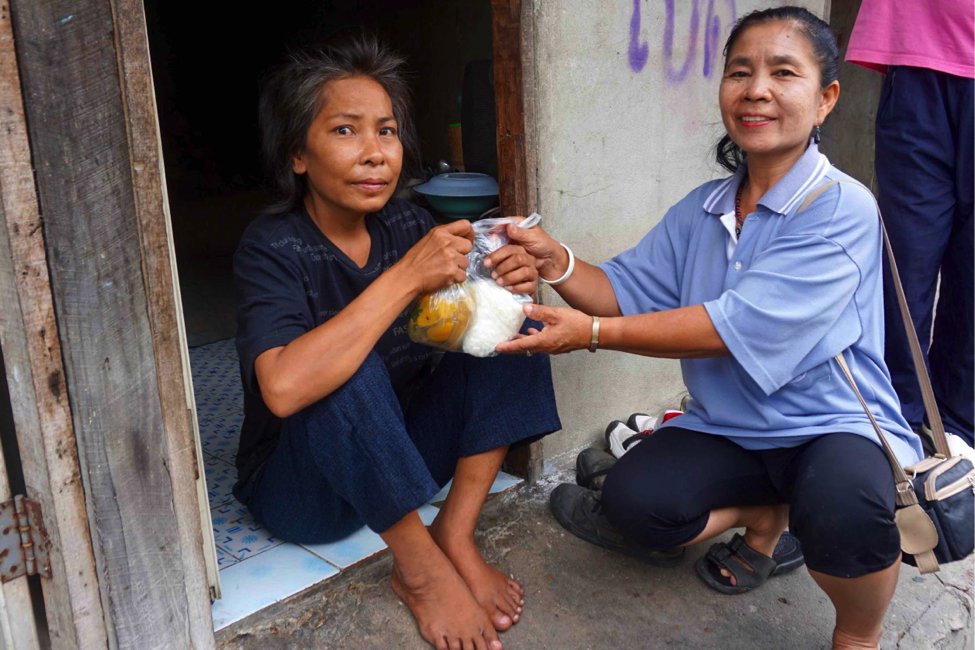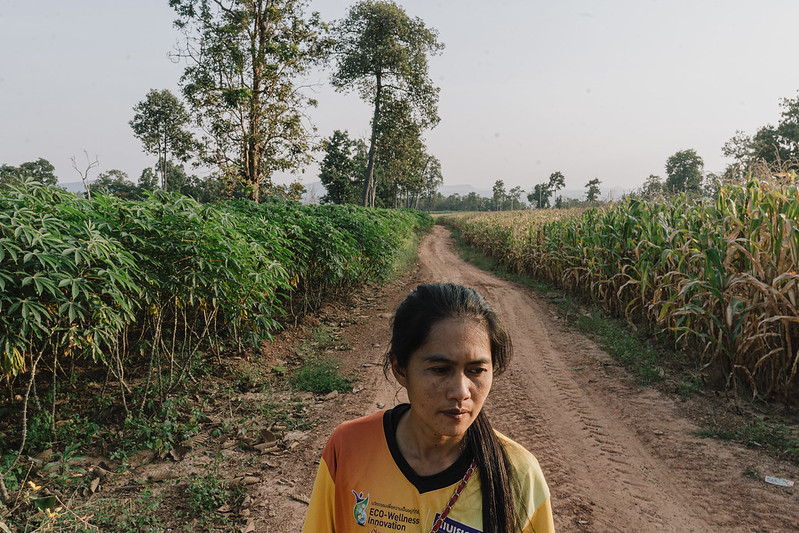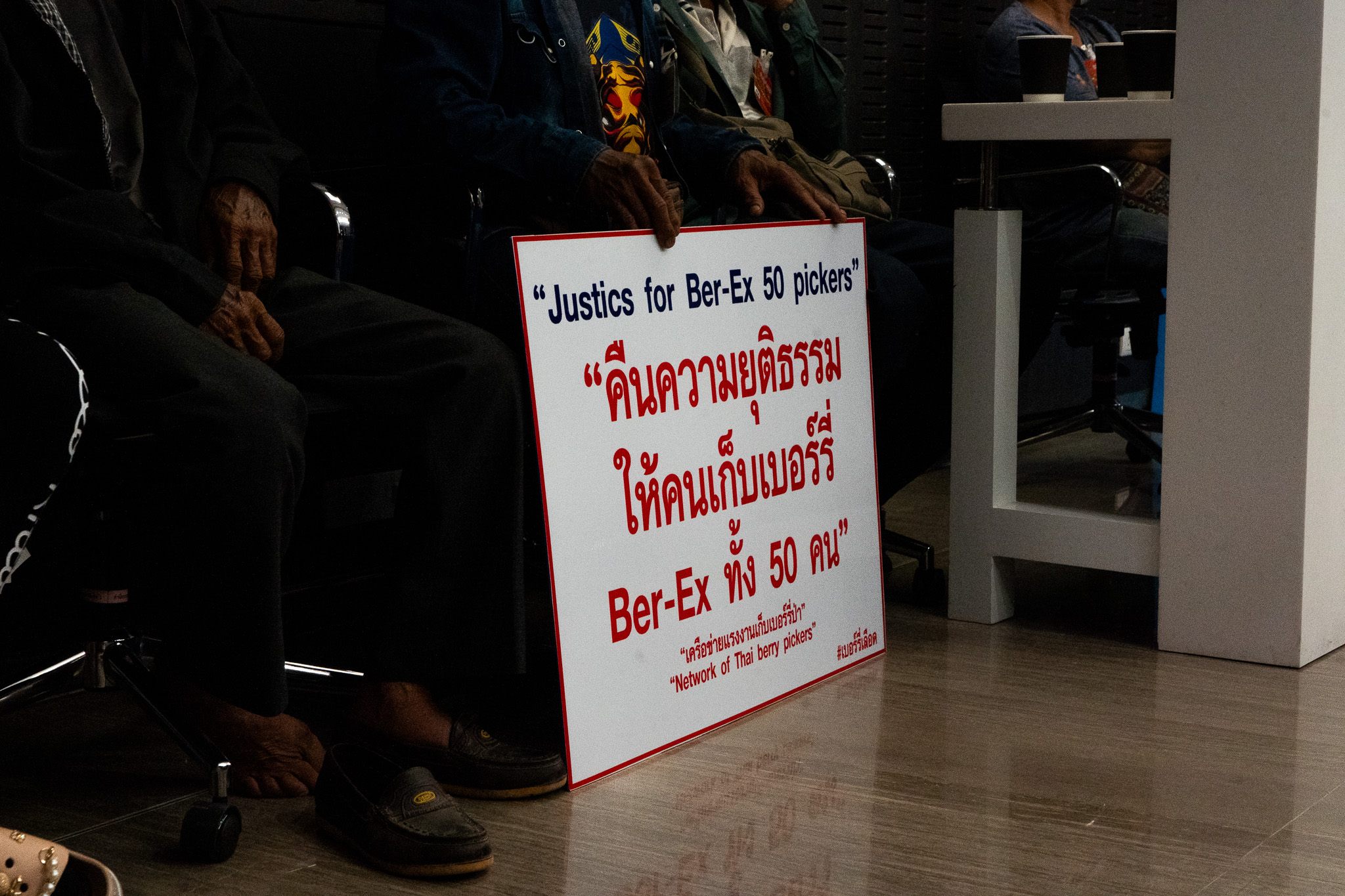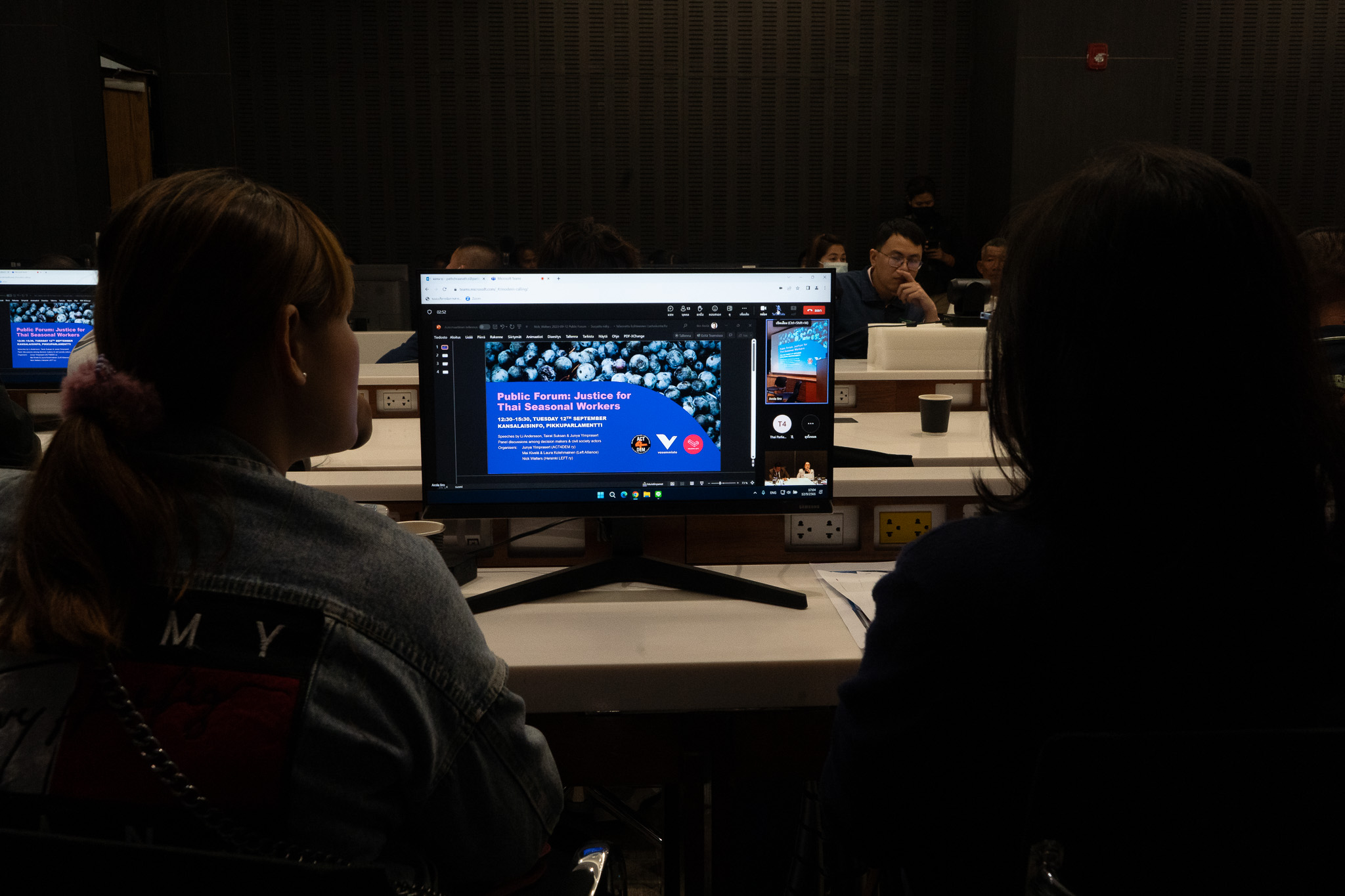For 35 years, Thailand’s primary healthcare system has rested on the shoulders of a legion of Village Health Volunteers. Now that Thailand has had universal healthcare for some years, is this model – which was originally established to boost poor rural communities’ access to essential healthcare – obsolete?
GUEST CONTRIBUTION by Zoe Swartz, Mariko Powers, and Katie Mathieson

Mekhala Nonsiri, 47, has high blood pressure and can barely walk due to calcium deficiency in her bones. There is a chance that her health will improve if she continues to take medication, but for the moment the help of Ms. Uthumporn is all she can count on.
KHON KAEN – Mekhala Nonsiri sits in the doorway of her two-room rented home in a slum community of Khon Kaen. She suffers from a calcium deficiency in her bones that makes walking nearly impossible. Living with a disability in an urban slum is already a challenge, but without the daily visits of a Village Health Volunteer (VHV) her life would be much harder.
Ms. Nonsiri lives in Theparak 5, one of Khon Kaen’s shanty communities. Set back from the slum’s narrow thoroughfare by an even narrower alley, her home overlooks the train tracks. Like everyone here, she is accustomed to pausing conversations amid the deafening clamor of passing trains.
Ms. Mekhala has plenty to fret over, but one thing she does not have to worry about is eating lunch. Each day, Uthumporn Srichai a Village Health Volunteer, checks on Ms. Mekhala and brings her a meal, free of charge. The 52-year-old has been a VHV for six years and looks after 15 disabled residents in Theparak 5 and its neighboring slums.
In her community, Ms. Uthumporn and the other nine VHVs serve as liaisons between villagers and the formal health sector. They provide basic services such as checking blood pressure, health consultations, first aid, and sometimes transportation to the hospital.
Thailand established this healthcare delivery system in 1980 after the country’s ratification of the Alma Ata Declaration, an international agreement to promote the health of all people.
In the 1980s, transportation in rural areas – where the bulk of the population lived – was difficult. Medical care was costly – prohibitively so for the poor. It made sense for communities to develop ways to take care of their own health.
Thailand in 2015 is quite different. According to the United Nations Development Programme, the number of impoverished households in Isaan dropped from 3.4% in 1996 to less than 1.3% by 2009. Northeastern people are more educated and urbanized.
Most importantly, a low-cost universal healthcare system was put in place in 2002.
Nevertheless, the VHV program continued to expand. There were 700,000 VHVs in 2005; now there are more than a million, each working with seven to twelve families in every community in Thailand. VHVs are expected to systematically coordinate their work with government public health policies.
The national budget for the VHV program is over 7.2 billion baht (US$240 million) annually, which includes funds for the 600-baht monthly stipend volunteers have received since 2001.
Given the changes in Thailand’s poverty demographics and the expansion of access to the healthcare system, are VHVs still necessary?
Dr. Amorn Nondasuta, Thailand’s former Permanent Secretary of Public Health, was in charge of the national primary healthcare program from 1983 to 1986. Now 87 years old and retired, it was under his watch that Thailand’s community health volunteer program was initiated 35 years ago.
The mission of the program has always been to expand “community access” by placing primary healthcare into the hands of villagers and creating “health autonomy,” Dr. Amorn says in an email to The Isaan Record. He originally hoped to see “the people fully in control of their own health, via behavior change or health planning and management.” But this mission, Dr Amorn admits, “has not been fully realized so far.”
A 1997 report found that the use of VHVs declined as Thailand urbanized and access to medical services improved. As a result, “more and more people self-refer into this level of care,” the report states.
“City people have many choices to visit doctors, so they don’t use VHVs,” says Vanarat Kongkam, who oversees the VHV program in Khon Kaen municipality.
Proponents of the program point out that the VHV program is closely tied to community development, a role that cannot be fulfilled by formal health services alone.
“VHVs are the role models of people in the communities. They are dedicated to many social causes. They become respected and may be elected headman,” says Waraporn Chukhanhom, Secretary to the Director of Public Health for Khon Kaen City District.
Government officials working with VHVs echo this sentiment and insist that the program still plays a crucial role for Thailand’s healthcare system. From the beginning, says Ms. Vanarat, the program was “exclusively designed to give poor people access to healthcare.”
In many cases, lack of transportation is an additional barrier to medical care. For rural residents in remote communities in Isaan, traveling to the hospital can be particularly burdensome. In order to tackle this problem, the VHV program in Isaan has established “Happy Pavilions” – small healthcare stations where volunteers provide basic care close to rural residents’ homes.
“The Happy Pavilion program works well,” Ms. Waraporn says, adding that it helps vulnerable populations “reduce the cost of hospital visits.”
As VHVs are members of the communities they serve, they know the day-to-day struggles of their neighbors and can track the general well-being of the families under their care. They can support people with mobility challenges by assisting them, giving baths, or providing diet-appropriate meals.
Most important, say proponents, the volunteers help villagers navigate the medical bureaucracy and personalize healthcare. When Ms. Mekhala first started to have trouble walking, she couldn’t afford to buy a wheelchair. With the support of her VHV, Ms. Uthumporn, she was able to secure municipality funds to purchase one.
The VHV program also provides basic healthcare training to selected villagers. In this way, they can serve as a bridge to the formal health system and actively support preventive healthcare in their communities.
![Ms. Somphaan [here standing with her daughter] spends most of her day working in the fields, but every two hours she stops what she is doing to care for her elderly mother. Her mother’s hand is tied to the bed so that she does not rip out her feeding tube. Most VHVs work a separate full time job and only spend a few hours a week volunteering. Thailand’s Potential Support Ratio is rapidly falling, according to the data from the United Nations. By 2025, the number of working-age adults potentially available to support the population aged 65 years or more will be reduced by half, compared to 2006.](https://theisaanrecord.co/wp-content/uploads/2015/09/VHVFaeature-2-1.png)
Ms. Somphaan [here standing with her daughter] spends most of her day working in the fields, but every two hours she stops what she is doing to care for her elderly mother. Her mother’s hand is tied to the bed so that she does not rip out her feeding tube. Most VHVs work a separate full time job and only spend a few hours a week volunteering. Thailand’s Potential Support Ratio is rapidly falling, according to the data from the United Nations. By 2025, the number of working-age adults potentially available to support the population aged 65 years or more will be reduced by half, compared to 2006.
“VHVs and villagers live in the same community, so volunteers know people’s problems better than the doctor and can work to help one another” says Jitti Chertchoo, the headman of the slum community Theparak 5.
The localized volunteer service model is effective in Thailand because it mirrors what is already culturally practiced – villagers taking care of family members and supporting the well-being of the community.
[gss ids=”2518,2519,2520,2521,2522,2523,2524,2525,2526,2527,2528,2529″ carousel=”fx=carousel”]




